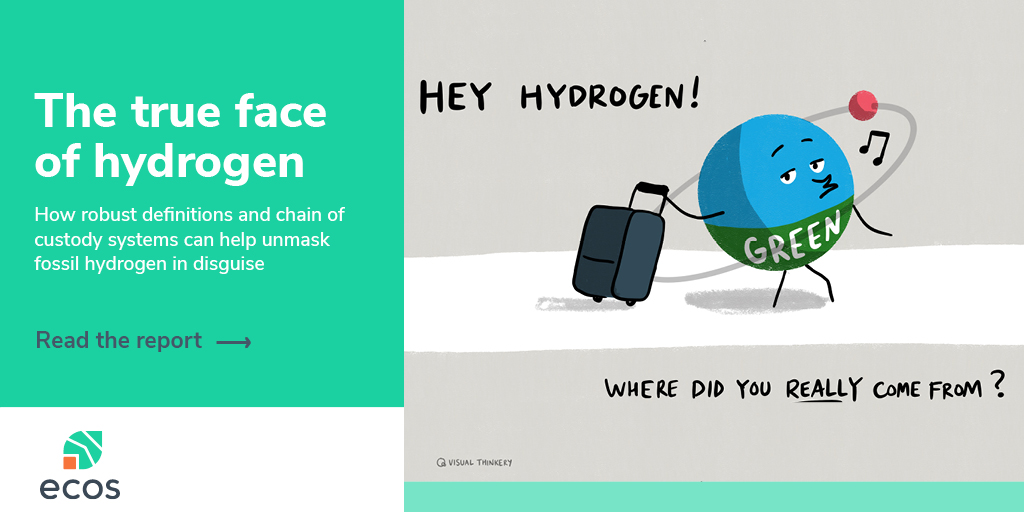REPORT – The true face of hydrogen: How robust definitions and chain of custody systems can help unmask fossil hydrogen in disguise
Hydrogen is not a silver bullet in the fight against climate change. It can only play a role in decarbonising hard-to-electrify sectors if it does not contribute to climate change. We can make this happen by enforcing strong definitions and the appropriate chain of custody models for hydrogen.

Hydrogen made from renewables will play a crucial role in the transition to clean energy – but we should be realistic about its role. In order to truly contribute to decarbonisation, hydrogen must have as low a climate impact as possible. Eventually, it should be produced from renewables only. Unfortunately, most of the hydrogen produced today is still very carbon-intensive – with electrolysis covering a mere 4% of all hydrogen produced in the EU.
The challenge
How do we define renewable hydrogen and non-renewable low-carbon hydrogen? What does ‘renewable’ and ‘low-carbon’ really mean?
And once we’ve figured that out:
How can we track and trace the full lifecycle of such hydrogen from source to consumer?
The solution
DO
- Only produce hydrogen using renewable energy;
- Strictly define renewable hydrogen, non-renewable hydrogen, and non-renewable low-carbon hydrogen;
- Choose the right chain of custody models.
DON’T
- Don’t use loose definitions;
- Don’t greenwash fossil gas by blending it with hydrogen.
Discover all the answers in our latest report! Download it here.
Download the document

